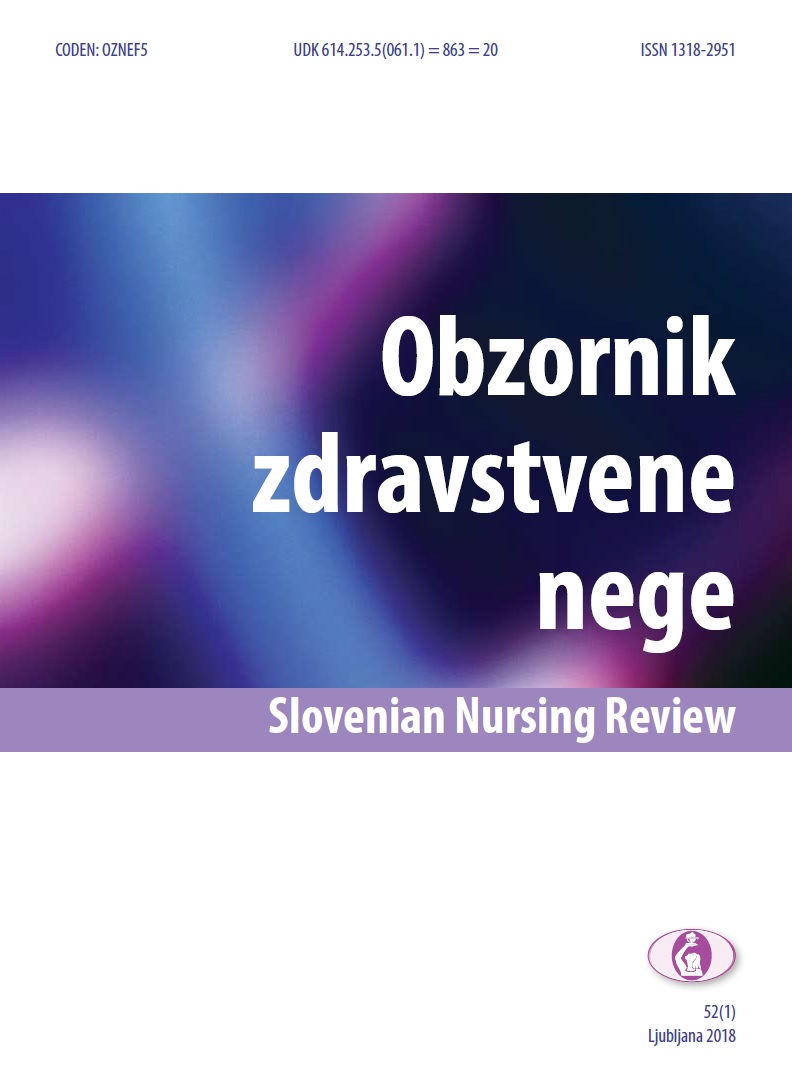Together the voice of nurses worldwide
invisible yet indispensable
DOI:
https://doi.org/10.14528/snr.2018.52.1.225Keywords:
nurses, health care, campaign, skilled health workforce, health systems, nursing careAbstract
The world is in a critical period of time in relation to human resources for health. One of the most significant obstacles for achieving health system effectiveness is the availability of a skilled health workforce, particularly nurses. The World Health Organization estimates that there is a significant shortage of nurses all over the world. Nurses are the main professional component of the ‘front line’ staff in the majority of health systems and their contribution is recognised as essential to meeting the Sustainable Development Goals (SDGs), and delivering safe, accessible and effective care. A shortage in the nursing workforce will lead to a failure to maintain or improve health care (Buchan & Aiken, 2008).
Downloads
Metrics
References
Brodaty, H., Low, L.F., Liu, Z., Fletcher, J., Roast, J., Goodenough, B., et al., 2014. Successful ingredients in the SMILE study: resident, staff, and management factors influence the effects of humor therapy in residential aged care. The American Journal of Geriatric Psychiatry, 22(12), pp. 1427–1437. https://doi.org/10.1016/j.jagp.2013.08.005 PMid:24119859
Buchan, J., & Aiken, L., 2008. Solving nursing shortages: a common priority. Journal of Clinical Nursing, 17(24), pp. 3262–3268. https://doi.org/10.1111/j.1365-2702.2008.02636.x
Flynn, L., Liang, Y., Dickson, G.L., & Aiken, L.H., 2010. Effects of nursing practice environments on quality outcomes in nursing homes. Journal of the American Geriatrics Society, 58(12), pp. 2401–2406. https://doi.org/10.1111/j.1532-5415.2010.03162.x
International Council of Nurses, 2018. Nurses: a voice to lead: health is a human right. Available at: www.icnvoicetolead.com [1. 2. 2018].
Jeon, Y.H., Glasgow, N.J., Merlyn, T., & Sansoni, E., 2010. Policy options to improve leadership of middle managers in the Australian residential aged care setting: a narrative synthesis. BMC Health Services Research, 10(190). https://doi.org/10.1186/1472-6963-10-190
Kelly, L.A., McHugh, M.D., Aiken, L.H., 2011. Nurse outcomes in Magnet® and non-magnet hospitals. Journal of Nursing Administration, 41(10), pp. 42–43. https://doi.org/10.1097/NNA.0b013e31822eddbc PMid:21934430; PMCid:PMC3201819
Stimpfel, A.W., Rosen, J.E., & McHugh, M.D., 2014. Understanding the role of the professional practice environment on quality of care in Magnet(R) and non-Magnet hospitals. Journal of Nursing Administration, 44(1), pp. 10–16. https://doi.org/10.1097/NNA.0000000000000015
Twigg, D., McCullough, K., 2014. Nurse retention: a review of strategies to create and enhance positive practice environments in clinical settings. International Journal of Nursing Studies, 51(1), pp. 85–92. https://doi.org/10.1016/j.ijnurstu.2013.05.015 PMid: 23809644
Downloads
Published
How to Cite
Issue
Section
License
As the author undersigned hereby, I transfer, assign, or otherwise convey the following authorship rights as comprised in the Copyright and Related Rights Act (CRRA) to the Slovenian Nursing Review, Ob železnici 30A, 1000 Ljubljana: the right of reproduction - the exclusive right to fix the work in a material medium or in another copy directly or indirectly, temporarily or permanently, by any means and in any digital form, in whole or in part (CRRA, Article 23); the right of distribution (CRRA, Article 24); the right of making a work available and accessible through the internet (CRRA, Article 32a); the right of transformation, especially the exclusive right to translate a pre-existing work (CRRA, Article 33). The transfer of author rights applies to the article in its entirety, including pictorial and/or graphic works and possible supplements. The transfer of rights is exclusive and unlimited in duration or territory.
























